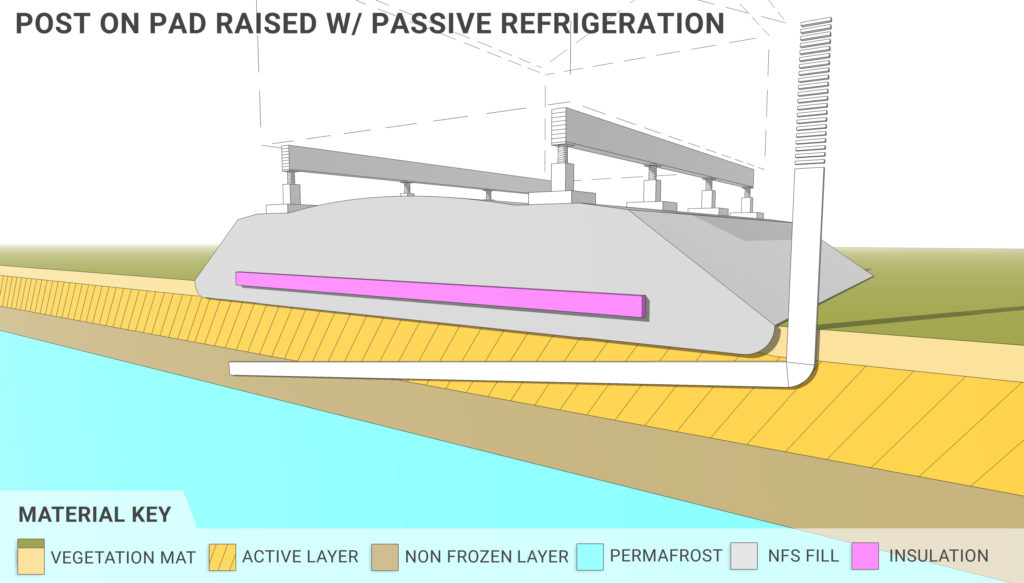The most widely employed, effective, and economical means of maintaining a stable thermal regime is using a ventilated foundation (with either open or ducted circulation of cold winter air between the insulated floor and underlying ground). The floor should be well-insulated and airtight to avoid an occupant closing up the airspace under the house and risk heating the permafrost. If snow blocks the airspace then it also blocks the ventilation. The airspace must be tall enough to allow for draft even with the amount of snow expected in that location. Excavated soils should be replaced with non-frost-susceptible (NFS) backfill. Corase, dry backfills can protect against heave that would occur from freezing next to the post or the pad. A raised gravel pad approach can be augmented by incorporating rigid insulation. Passive refrigeration has been added with the incorporation of a thermosyphon. A thermosyphon is a passive heat exchanger that circulates fluid without a mechanical system.
